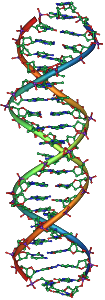 As an intern at Metropolitan State Hospital in the late 70’s, I remember being surprised to see a Catholic cleric on the wards where I worked. Because so many of the patients had perverse religious ideas associated with their psychoses, such as believing that they themselves were Jesus or that they were possessed by demons, I naively thought that having a preacher around could only make things worse.
As an intern at Metropolitan State Hospital in the late 70’s, I remember being surprised to see a Catholic cleric on the wards where I worked. Because so many of the patients had perverse religious ideas associated with their psychoses, such as believing that they themselves were Jesus or that they were possessed by demons, I naively thought that having a preacher around could only make things worse.
I never got to know Brother Gerald well, but we did take a few walks together around the grounds of the hospital. On one of the walks I expressed my reservations about his being there, given the religious ideation of so many of the patients. He responded, surprisingly, that religion didn’t come up that often. Mostly he just acted like a friend, he said, someone to bounce ideas off of.
He explained to me that he had no formal training in psychotherapy, but there was no dearth of wisdom in the church and a lot of experienced people with whom he could talk. At one point he said that sometimes he “prays with” his patients, which really perked me up, because to me that was a pretty religious and potentially damaging thing.
“What kinds of things do you pray for?” I asked him, trying to set a trap.
He looked at me a bit nonplused, and kindly said, “Oh no, we don’t pray for anything. God isn’t a vending machine.”
To me, prayer was the thing that children did when they knelt by the side of their beds, put their palms together and asked God or Jesus to make their parents stop fighting with each other or for Daddy to stop coming home drunk. So I asked Brother Gerald what he meant by prayer.
“Prayer is a state of gratitude,” he said. “It’s an active way of thanking God for all that has been given to us.”
“You mean, if you’re sick you don’t ask God to make you better? What do you do if someone is sick?” I wasn’t giving up that easily.
“If someone is sick, your prayers are about being grateful for the strength that they already have to heal themselves. If someone is afraid, your prayers are your gratitude for the courage they already have to face their fears.”
The affirmation of the aspects of one’s self that can be garnered to heal oneself is a key ingredient in the kind of psychotherapy I have practiced for many years. (I remember the words of one of my first supervisors, a behaviorist, who used to say “Assume health.”) But reducing Brother Gerald’s view of prayer to a psychotherapeutic ingredient does it little justice.
After a couple of walks with Brother Gerald, I remember feeling not only glad that he was there, but comforted knowing I could consult with him if I wanted to augment the advice of my supervisors. Life before or since that internship has not been a bed of roses, but the advice of Brother Gerald has helped me to see and appreciate not only the roses that do appear but also the challenges and tribulations out of which roses might eventually emerge. For all of that, and for the walks with Brother Gerald around the hospital grounds, I am grateful.









